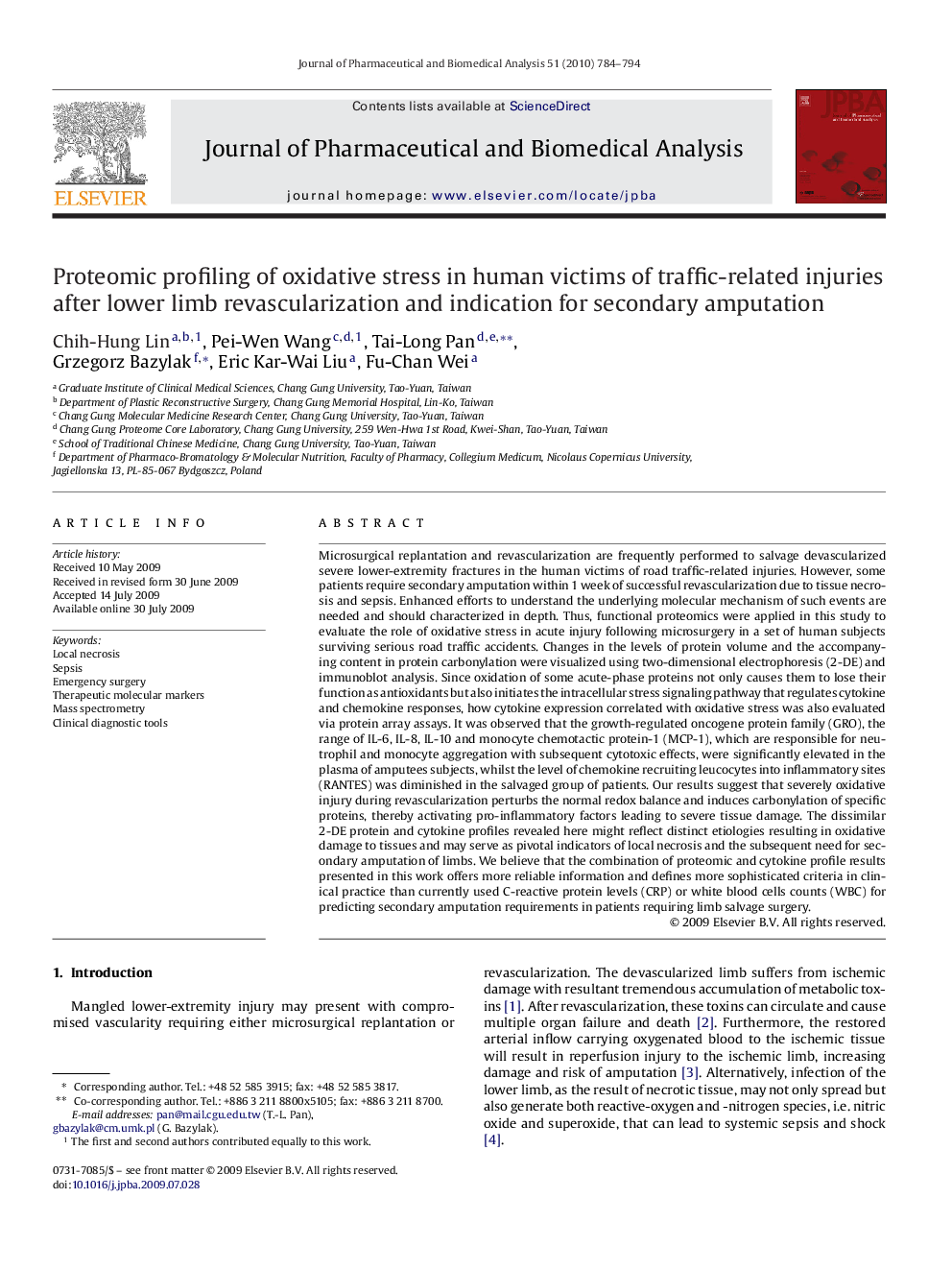| کد مقاله | کد نشریه | سال انتشار | مقاله انگلیسی | نسخه تمام متن |
|---|---|---|---|---|
| 1222469 | 967864 | 2010 | 11 صفحه PDF | دانلود رایگان |

Microsurgical replantation and revascularization are frequently performed to salvage devascularized severe lower-extremity fractures in the human victims of road traffic-related injuries. However, some patients require secondary amputation within 1 week of successful revascularization due to tissue necrosis and sepsis. Enhanced efforts to understand the underlying molecular mechanism of such events are needed and should characterized in depth. Thus, functional proteomics were applied in this study to evaluate the role of oxidative stress in acute injury following microsurgery in a set of human subjects surviving serious road traffic accidents. Changes in the levels of protein volume and the accompanying content in protein carbonylation were visualized using two-dimensional electrophoresis (2-DE) and immunoblot analysis. Since oxidation of some acute-phase proteins not only causes them to lose their function as antioxidants but also initiates the intracellular stress signaling pathway that regulates cytokine and chemokine responses, how cytokine expression correlated with oxidative stress was also evaluated via protein array assays. It was observed that the growth-regulated oncogene protein family (GRO), the range of IL-6, IL-8, IL-10 and monocyte chemotactic protein-1 (MCP-1), which are responsible for neutrophil and monocyte aggregation with subsequent cytotoxic effects, were significantly elevated in the plasma of amputees subjects, whilst the level of chemokine recruiting leucocytes into inflammatory sites (RANTES) was diminished in the salvaged group of patients. Our results suggest that severely oxidative injury during revascularization perturbs the normal redox balance and induces carbonylation of specific proteins, thereby activating pro-inflammatory factors leading to severe tissue damage. The dissimilar 2-DE protein and cytokine profiles revealed here might reflect distinct etiologies resulting in oxidative damage to tissues and may serve as pivotal indicators of local necrosis and the subsequent need for secondary amputation of limbs. We believe that the combination of proteomic and cytokine profile results presented in this work offers more reliable information and defines more sophisticated criteria in clinical practice than currently used C-reactive protein levels (CRP) or white blood cells counts (WBC) for predicting secondary amputation requirements in patients requiring limb salvage surgery.
Journal: Journal of Pharmaceutical and Biomedical Analysis - Volume 51, Issue 3, 5 February 2010, Pages 784–794